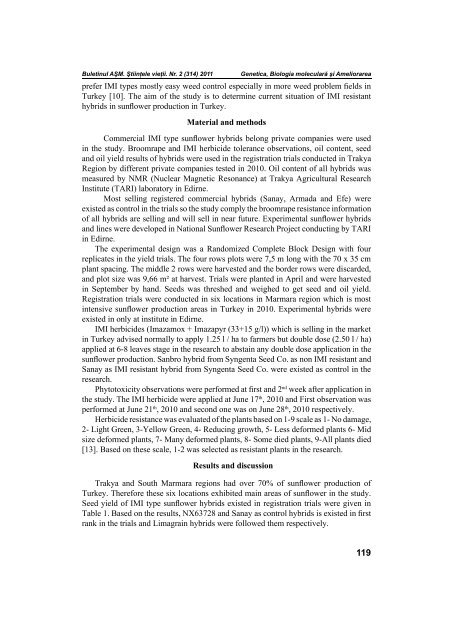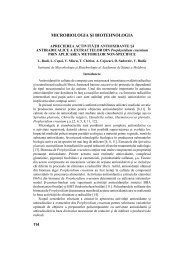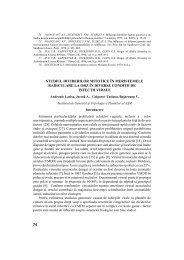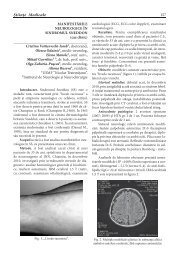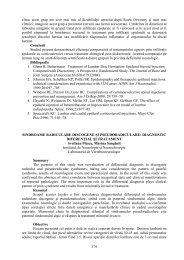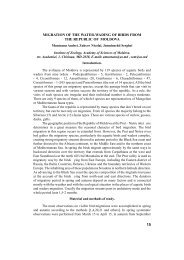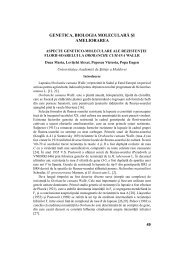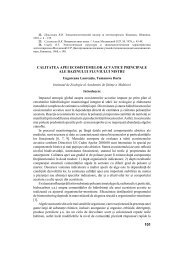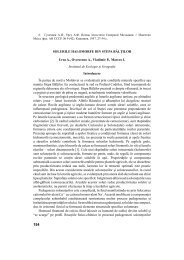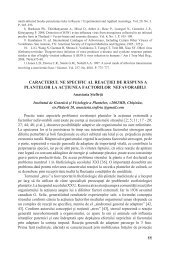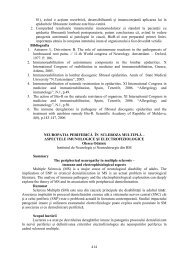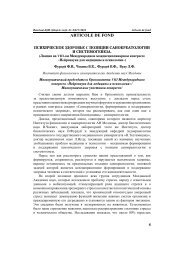209 CONTENTS
209 CONTENTS
209 CONTENTS
Create successful ePaper yourself
Turn your PDF publications into a flip-book with our unique Google optimized e-Paper software.
Buletinul AŞM. Ştiinţele vieţii. Nr. 2 (314) 2011<br />
prefer IMI types mostly easy weed control especially in more weed problem elds in<br />
Turkey [10]. The aim of the study is to determine current situation of IMI resistant<br />
hybrids in sun ower production in Turkey.<br />
Material and methods<br />
Commercial IMI type sun ower hybrids belong private companies were used<br />
in the study. Broomrape and IMI herbicide tolerance observations, oil content, seed<br />
and oil yield results of hybrids were used in the registration trials conducted in Trakya<br />
Region by different private companies tested in 2010. Oil content of all hybrids was<br />
measured by NMR (Nuclear Magnetic Resonance) at Trakya Agricultural Research<br />
Institute (TARI) laboratory in Edirne.<br />
Most selling registered commercial hybrids (Sanay, Armada and Efe) were<br />
existed as control in the trials so the study comply the broomrape resistance information<br />
of all hybrids are selling and will sell in near future. Experimental sun ower hybrids<br />
and lines were developed in National Sun ower Research Project conducting by TARI<br />
in Edirne.<br />
The experimental design was a Randomized Complete Block Design with four<br />
replicates in the yield trials. The four rows plots were 7,5 m long with the 70 x 35 cm<br />
plant spacing. The middle 2 rows were harvested and the border rows were discarded,<br />
and plot size was 9,66 m² at harvest. Trials were planted in April and were harvested<br />
in September by hand. Seeds was threshed and weighed to get seed and oil yield.<br />
Registration trials were conducted in six locations in Marmara region which is most<br />
intensive sun ower production areas in Turkey in 2010. Experimental hybrids were<br />
existed in only at institute in Edirne.<br />
IMI herbicides (Imazamox + Imazapyr (33+15 g/l)) which is selling in the market<br />
in Turkey advised normally to apply 1.25 l / ha to farmers but double dose (2.50 l / ha)<br />
applied at 6-8 leaves stage in the research to abstain any double dose application in the<br />
sun ower production. Sanbro hybrid from Syngenta Seed Co. as non IMI resistant and<br />
Sanay as IMI resistant hybrid from Syngenta Seed Co. were existed as control in the<br />
research.<br />
Phytotoxicity observations were performed at rst and 2 nd week after application in<br />
the study. The IMI herbicide were applied at June 17 th , 2010 and First observation was<br />
performed at June 21 th , 2010 and second one was on June 28 th , 2010 respectively.<br />
Herbicide resistance was evaluated of the plants based on 1-9 scale as 1- No damage,<br />
2- Light Green, 3-Yellow Green, 4- Reducing growth, 5- Less deformed plants 6- Mid<br />
size deformed plants, 7- Many deformed plants, 8- Some died plants, 9-All plants died<br />
[13]. Based on these scale, 1-2 was selected as resistant plants in the research.<br />
Results and discussion<br />
Genetica, Biologia moleculară şi Ameliorarea<br />
Trakya and South Marmara regions had over 70% of sun ower production of<br />
Turkey. Therefore these six locations exhibited main areas of sun ower in the study.<br />
Seed yield of IMI type sun ower hybrids existed in registration trials were given in<br />
Table 1. Based on the results, NX63728 and Sanay as control hybrids is existed in rst<br />
rank in the trials and Limagrain hybrids were followed them respectively.<br />
119


